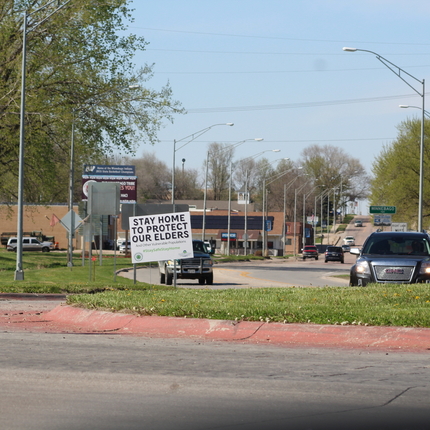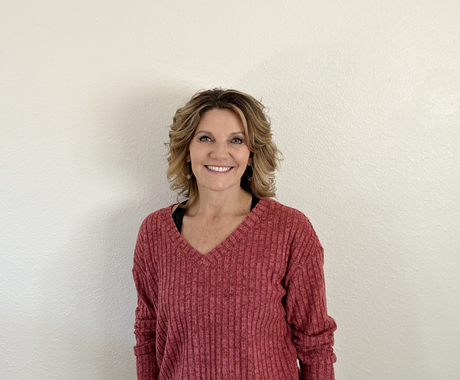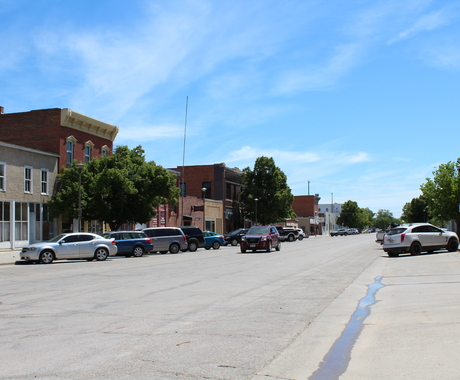By Henry Miller
In many communities across rural America, we are beginning to ease into the new norms and routines of quarantine. Each of us is attending to the impacts of COVID-19 on our friends, families, and communities as we all reflect on these unprecedented times.
Similarly, yet quite distinct, Tribal communities and Indigenous people have been presented with unique challenges across America that many of us may not be familiar with. By taking a closer look at how food sovereignty rebuilds disconnected nutrition systems in Native communities, we can begin to understand how education, access, distribution, and resiliency address intersecting challenges and opportunities in rural Nebraska.
Lizzie Swalley, community food associate at the Center for Rural Affairs in Santee, Nebraska, defines food sovereignty as when “a community is able to grow their own food, not just on a personal basis with backyard gardens, but as a community… [because] our money is not going elsewhere, and neither is our nutrition.”
This global pandemic is disrupting Tribal communities’ food systems and is disproportionately deadly for Indigenous communities and for people of color. Both the Omaha Tribe and the Santee Sioux Nation have implemented lockdown measures, have confirmed cases of COVID-19, and some individuals have lost their lives.
High levels of diabetes, obesity, and chronic obstructive pulmonary disease (COPD) in Tribal communities place many at greater risk of COVID-19 due to historically disrupted food systems.
“We’re just not getting the nutrients we need from Indigenous foods,” Lizzie said.
Between the flooding of last spring and COVID-19, many Tribal members across Nebraska are rethinking the immediacy of food sovereignty.
“There are a lot more talks about ‘back in the day when I was younger, my grandma always had a garden,’” said Suzi French, Center for Rural Affairs community food associate on the Omaha Reservation.
Simultaneously, many are recognizing the importance of the global pandemic’s centralized historical and generational trauma that transcends the present moment. COVID-19 threatens cultural erasure. Thus, reconnecting millennia-old nutrition systems is key to preserving the past, surviving in the present, and securing Native futures.
Kristine Flyinghawk, a community food demonstrator in Santee who has partnered with the Center the past several seasons, has been a key participant in adjusting to canceled in-person food workshops. Kristine’s leadership in transitioning distance learning from starting vegetables, to instead planting fruit trees, in the Santee community has been vital in balancing education and social distancing.
“Where we need to hit hard is getting students to eat healthy and make those healthy choices for themselves and really get them to understand the education behind what the tomato is providing them,” Lizzie said.
Access to healthy foods is affecting choices for both the youngest and eldest in Nebraska’s Tribal communities. In Santee, farmers markets are transforming into more community centered distribution places with hopes of opening in late summer. Macy and Walthill, on the other hand, are facing more cases of COVID-19 and are still problem solving how to create a safe community space for their produce markets.
Distribution is the next challenge.
“Commodities (food received through government treaties from land and nutritional loss) has really been stepping up their game,” Lizzie said. “For a few years now, they have been distributing fresh produce.”
Each tribe has been facing their own unique challenges with the distribution of goods, as demands are constantly changing. Suzi shares how the “senior citizen program went from delivering 85 meals a day to 350,” and said that “our entire history is with our elders.” Those most immunocompromised are often the youngest and the oldest in Tribal society.
Through each of these multi-layered challenges, stories of resiliency and problem solving bring pride to communities. Suzi describes how all of her garden preparation programs and workshops were canceled, but she still needed to distribute more than 200 bags of seeds to eager gardeners. Through true rural know-how, Suzi was able to make that happen.
“I put fence posts along my highway [near my house]… with red flags on them,” said Suzi. “Then I stapled the seed packs that I made to them. People picked them up. It was amazing.”
In Santee, the number of individual gardens doubled from 30 to 60, with more people than ever signing up. Lizzie praises her gardening assistant Nepthys Justo, as she is texting, calling, and emailing responses to questions that the new gardeners have regarding weed control and watering. Like so much of this labor, the work of Lizzie and her assistants is often masked behind the chaos of COVID-19.
Communities across rural America are faced with new challenges and opportunities during an unprecedented time. In Tribal communities across Nebraska, these challenges are eminent, and we must listen to and trust each community’s plan of action regarding the safety of their residents and the sovereignty of their local food systems.
“We didn't get this way overnight,” Lizzie said. “So, it's going to take us time to get to where we want our community back to—growing healthy, natural foods.”
Tribal communities across our state and nation continue to serve as a testament to the resiliency and problem-solving capacity of people across rural America.





